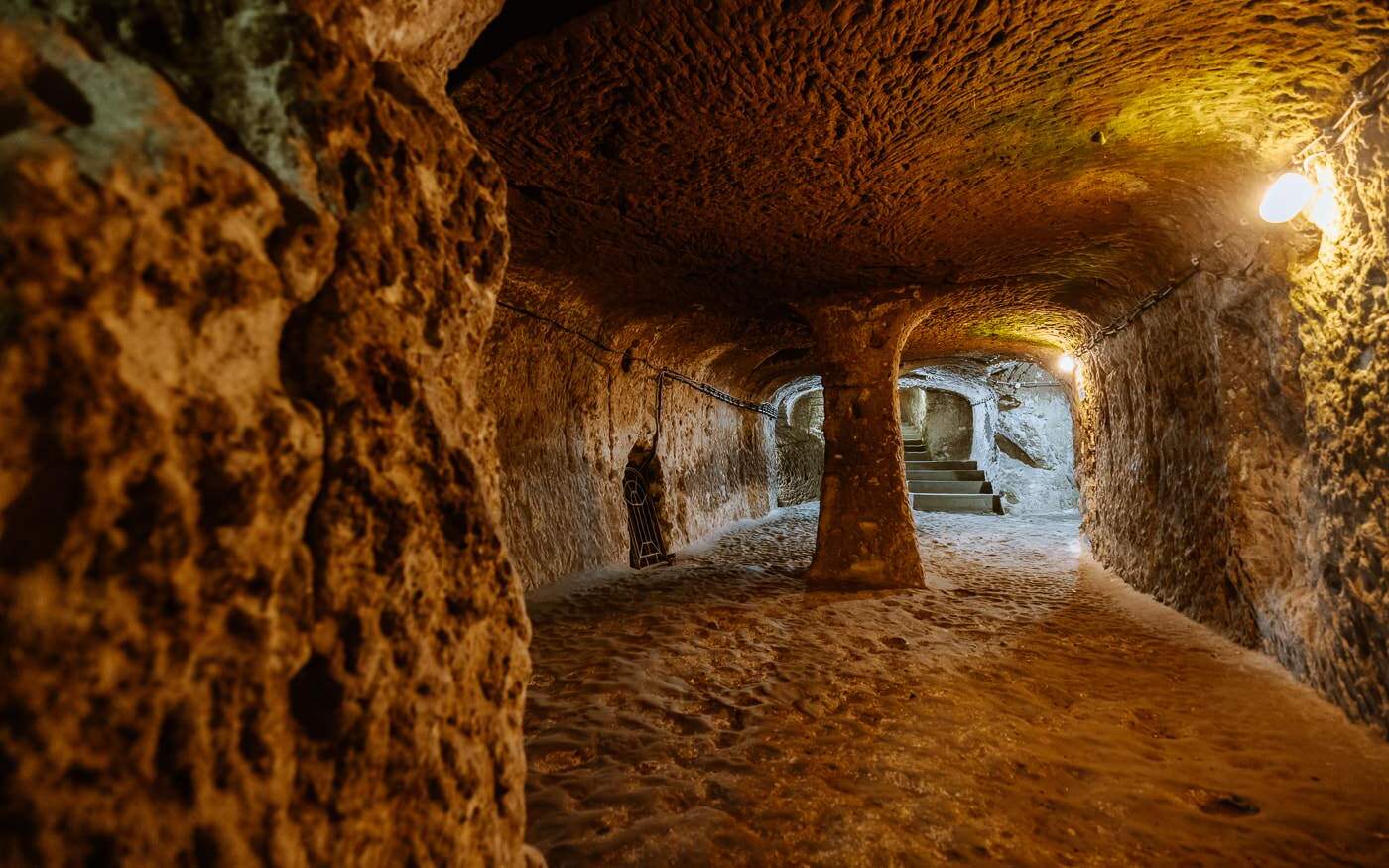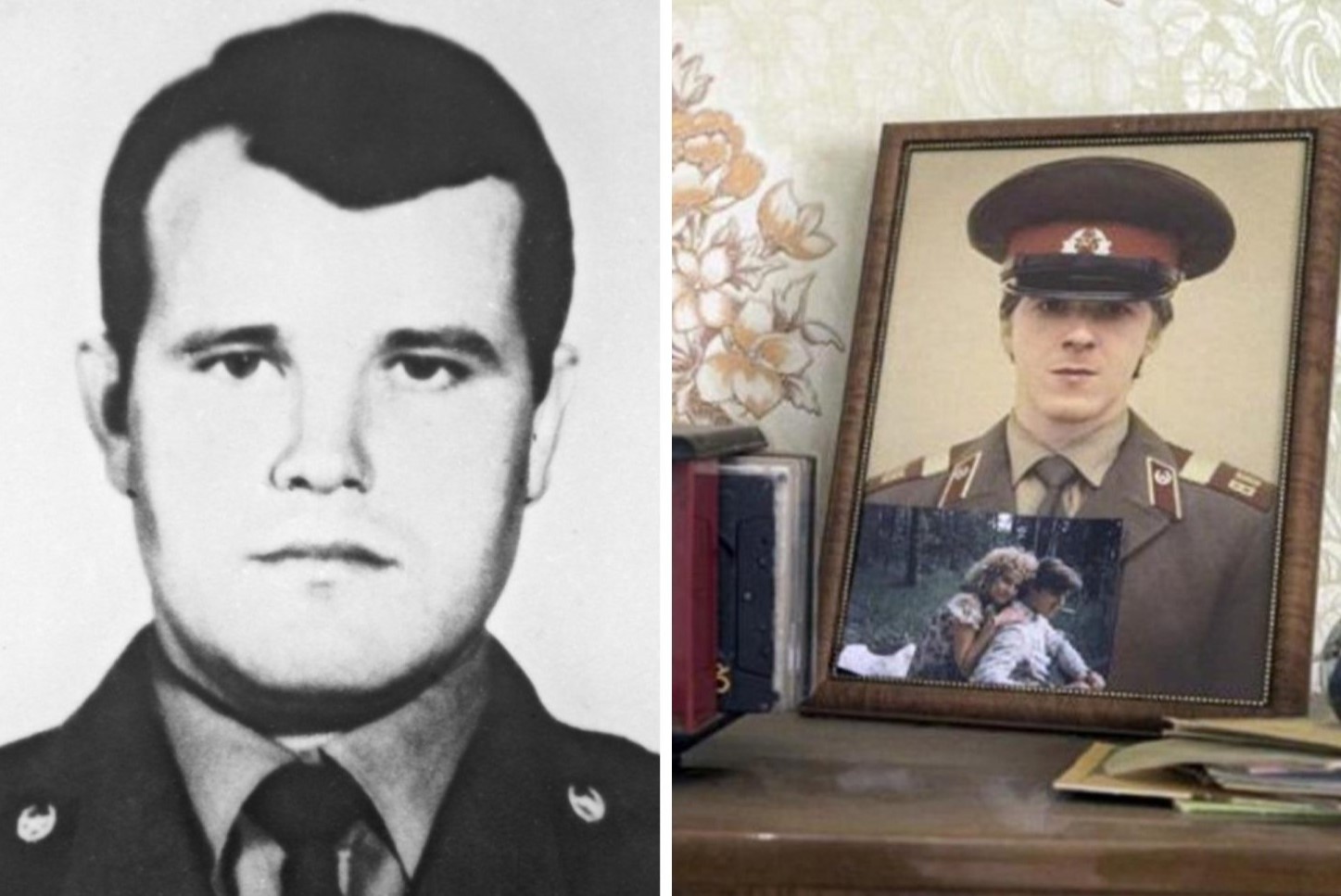
Ever wondered what lies beneath the surface of Cappadocia? Hidden deep underground, Derinkuyu Underground City is a marvel of ancient engineering and human ingenuity. Rediscovered in the 1960s, this subterranean labyrinth stretches 85 meters deep and spans eight levels, capable of housing up to 20,000 people. Built initially by the Phrygians in the 8th century BC and expanded during the Byzantine era, it served as a refuge for early Christians fleeing persecution. With its intricate ventilation system, water wells, and defensive features, Derinkuyu offers a glimpse into a world designed for survival. Join us as we explore 35 intriguing facts about this underground wonder.
Key Takeaways:
- Discover the hidden world of Derinkuyu Underground City, a refuge for early Christians and a marvel of ancient engineering. Its historical significance and unique features make it a must-visit for history enthusiasts.
- Explore the depths of Derinkuyu, an underground city with a fascinating history of rediscovery. From its architectural marvels to its connection to other cities, this ancient wonder is a testament to human ingenuity and resilience.
Discovery and Rediscovery
Derinkuyu Underground City has a fascinating history of discovery and rediscovery. Let's dive into how this ancient marvel came back to light.
-
Derinkuyu Underground City was rediscovered in the 1960s after a local man noticed a secret room hidden behind a wall in his house. The city was abandoned from the 1923 population exchange between Greece and Turkey and remained hidden for decades.
-
The rediscovery of Derinkuyu began with a local man repairing his home. He noticed a mysterious room hidden behind a wall and, upon further excavation, uncovered an intricate tunnel system.
Depth and Size
The sheer size and depth of Derinkuyu Underground City are mind-boggling. Here are some incredible facts about its dimensions.
- Derinkuyu is an astonishing 85 meters deep, equivalent to a 25-story building. It is the largest of the underground cities in Cappadocia, with a capacity to hold up to 20,000 people.
Historical Population and Use
This underground city served as a refuge for many different groups throughout history. Let's explore who lived here and why.
-
The city was inhabited by early Christians who used it as a refuge from religious persecution. It was also used as a hiding place during the Ottoman Empire and the Mongolian invasions.
-
Derinkuyu was used as a refuge during various historical periods, including the Arab-Byzantine Wars and the Mongolian invasions. It continued to serve as a sanctuary for Christians until the 20th century.
-
The city was abandoned after the 1923 population exchange between Greece and Turkey, which resulted in the expulsion of the area's Christian residents. It remained hidden for nearly four decades until its rediscovery.
Construction and Expansion
The construction of Derinkuyu is a marvel of ancient engineering. Let's look at how and when it was built.
-
The construction of Derinkuyu is believed to have started in the 8th century BC by the Phrygians. However, it was significantly expanded during the Byzantine era.
-
During the Byzantine era, Derinkuyu was fully formed and expanded into deep multi-level dwellings with chapels. This period saw significant additions to the city's infrastructure and religious facilities.
Architectural Design and Features
Derinkuyu's architectural design is both functional and fascinating. Here are some key features.
-
Derinkuyu features unique architectural designs, including barrel-vaulted ceilings, which were traditionally found in Byzantine missionary schools. These ceilings were used to soften the edges of rooms and make them appear larger.
-
The city was uniquely designed to withstand attacks. The large stone doors could be rolled in front of major entrances, forming a two-foot thick wall-like defense. The narrow tunnels also acted as bottlenecks, funneling enemy forces and making them easier to defend against.
-
Derinkuyu is the only city in the world built entirely underground with barrel-vaulted ceilings. These ceilings were used to soften the edges of rooms and make them appear larger. They were also traditionally found in Byzantine missionary schools.
-
The unique rooms with barrel-vaulted ceilings were used for religious schools. This makes sense given the purpose of the city was necessitated by attacks on religious freedoms.
Ventilation and Water Supply
Living underground requires ingenious solutions for ventilation and water supply. Derinkuyu had both.
-
Derinkuyu boasts an impressive ventilation system with over 15,000 perfectly planned shafts, each about 10 centimeters wide. These shafts ensured sufficient ventilation down eight levels of the city.
-
The ventilation shafts in Derinkuyu were crucial for maintaining a fresh air supply. These shafts were strategically placed to ensure natural airflow between homes and passageways.
-
The well in Derinkuyu was over 55 meters deep. City residents could block it off from below, ensuring a reliable water supply. Some surface dwellers even used the vents to get water, unbeknownst to them that there was an entire hidden city below.
-
The city had a reliable water supply system, with some ventilation shafts doubling as wells. This ensured that the inhabitants had access to fresh water throughout their stay.
Connection to Other Cities
Derinkuyu wasn't an isolated city. It had connections to other underground cities, enhancing its functionality.
-
Derinkuyu was connected to other underground cities like Kaymakli through extensive tunnel networks. This network allowed inhabitants to move between cities safely.
-
The city continued to provide a sanctuary for Christians during the Mongolian invasions led by Timur in the 14th century. Its tunnel network allowed inhabitants to move safely between cities.
Artifacts and Features
Derinkuyu is rich in artifacts and unique features that tell us more about the lives of its inhabitants.
-
The city contains various artifacts and features, including dwellings, kitchens, vineyards, chapels, staircases, and linseed presses used to make lamp oil. Grinder stones, stone crosses, and ceramics are also found within the city.
-
Derinkuyu had a dungeon if things got too rowdy in the confines of the city. This feature adds to the complexity and functionality of the underground city.
-
The city had stables and facilities for livestock, indicating that it was self-sustaining. This included areas for food and wine storage, kitchens, and other communal facilities.
-
Derinkuyu had areas for food and drink preparation, including kitchens and vineyards. This suggests that the city was designed to be self-sufficient, providing all necessary amenities for its inhabitants.
-
The city had extensive storage facilities for food, wine, and other essential items. This was crucial for sustaining a large population over an extended period.
-
Derinkuyu contains a church and several chapels, which were used for religious purposes. These religious facilities were an integral part of the city's design and functionality.
Tourism and Preservation
Today, Derinkuyu is a major tourist attraction, drawing visitors from around the world. Here's what you need to know if you plan to visit.
-
Since 1985, Derinkuyu has been open to tourists. Visitors can explore the top eight floors of the city, but it is recommended to visit with a guide due to the narrow tunnels and steep staircases.
-
Derinkuyu is not recommended for those who are claustrophobic or frail. The narrow passages and steep staircases can be challenging for some visitors.
-
Visiting Derinkuyu takes around 90 minutes. Due to the lack of signage, it is recommended to read up on the site history beforehand. The visit involves moving through small areas that require hunching down, but not crawling.
-
The easiest way to reach Derinkuyu is by car. From Kayseri, take the D805 to Gülbayir and head west towards Derinkuyu. The drive should take around an hour and a half, and the city is only a 10-minute drive from Kaymakli.
Location and Historical Significance
Derinkuyu's location and historical significance make it a must-visit site for history buffs and curious travelers alike.
-
Derinkuyu is located in the province of Nevşehir, approximately 40 kilometers south of Göreme Village in the Cappadocia region. The region is built on soft volcanic rock, making it easy to dig caves into them.
-
Derinkuyu's historical significance extends beyond its architectural marvels. It provides a glimpse into the lives of early Christians who used these underground cities as refuges from persecution. The city's preservation is a testament to the ingenuity and resilience of its inhabitants.
-
Derinkuyu Underground City is part of the UNESCO World Heritage Site, recognized for its historical and cultural significance. It offers an in-depth insight into the lives of troglodyte or cave-dwelling people.
-
Under Ottoman Turkish Muslims, Derinkuyu was used as a refuge by the native population. It remained a place of hiding for Cappadocian Greek locals as late as the 20th century.
-
Derinkuyu served as a refuge during the Arab-Byzantine Wars between 780 and 1180 AD. Its defensive features and underground location made it an ideal sanctuary for Christians.
-
The city continued to provide a sanctuary for Christians during the Mongolian invasions led by Timur in the 14th century. Its tunnel network allowed inhabitants to move safely between cities.
-
Today, Derinkuyu is a major tourist destination, welcoming visitors from around the world. Its preservation is crucial for maintaining its historical integrity and allowing future generations to appreciate its significance. The site is managed by local authorities and UNESCO to ensure its continued preservation and accessibility.
Derinkuyu's Lasting Legacy
Derinkuyu Underground City stands as a testament to human ingenuity and resilience. Rediscovered in the 1960s, this 85-meter-deep marvel could house up to 20,000 people. Its intricate ventilation system, reliable water supply, and defensive features highlight the advanced engineering skills of its builders. Used by early Christians to escape persecution, it later served as a refuge during the Arab-Byzantine Wars and Mongolian invasions. Abandoned after the 1923 population exchange between Greece and Turkey, Derinkuyu remained hidden for decades. Today, it’s a UNESCO World Heritage Site and a popular tourist destination. Visitors can explore its eight levels, marvel at its barrel-vaulted ceilings, and imagine life in this subterranean sanctuary. Derinkuyu offers a unique glimpse into the past, preserving the legacy of those who sought safety and community underground. Its preservation ensures future generations can appreciate this historical wonder.
Frequently Asked Questions
Was this page helpful?
Our commitment to delivering trustworthy and engaging content is at the heart of what we do. Each fact on our site is contributed by real users like you, bringing a wealth of diverse insights and information. To ensure the highest standards of accuracy and reliability, our dedicated editors meticulously review each submission. This process guarantees that the facts we share are not only fascinating but also credible. Trust in our commitment to quality and authenticity as you explore and learn with us.


